The end of November 2014 saw areas of inshore waters across Hong Kong and east Shenzhen turn improbably colourful thanks to extensive red tides. Night-time scenes were even more arresting, as seawater stirred by ferries or thrown stones flashed blue-green with luminescence. The main phytoplankton in the blooms even turned out to be a bizarre microorganism.
Yet while scientifically fascinating, the red tides might be among signals that intense development in Hong Kong and nearby is increasingly unsustainable.
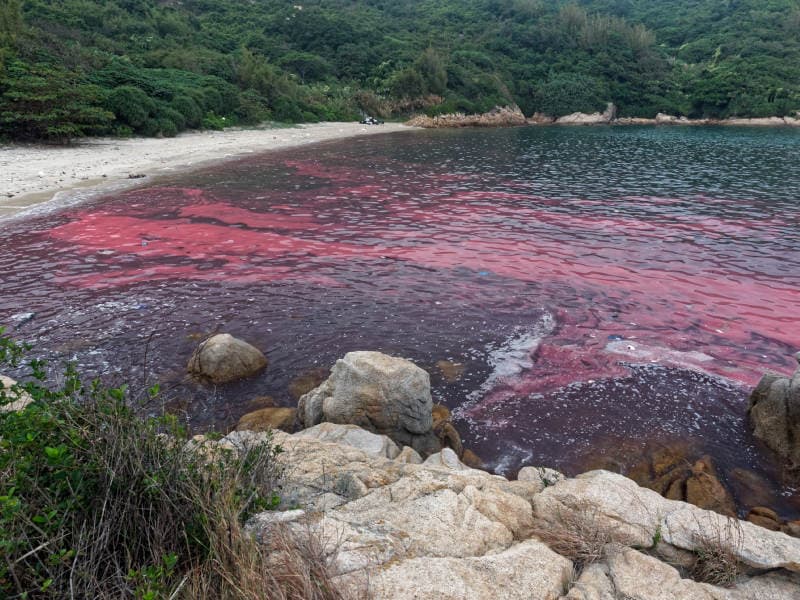
Red tides are formed by blooms of microscopic algae. Though occurring naturally, they are often linked to pollution, such as phosphates from sewage and fertilisers. The first six months of this year saw 35 days with red tide records, reportedly the most since 1988.
A few red tide algae contain highly toxic chemicals. In 1998, one such species caused massive fish kills at local fish farms. Otherwise, red tides are mostly harmless.
I learned from the Agriculture, Fisheries and Conservation Department that the main species causing November’s red tides was Noctiluca scintillans. It turns out this is a curious life form. It’s a dinoflagellate – a single-celled organism with two tiny whip-like structures giving it feeble swimming ability. Though unable to photosynthesise, N. scintillans can sometimes have a cell green algae cell inside, and form green blooms.
More typically, N. scintillans feeds on other microscopic life, and if these abound it may multiply to form red tides, described as looking like tomato soup. This “tomato soup” appearance certainly fit red tides I saw at Cheung Chau in late November. I also saw the bright, flashing bio-luminescence that has led to N. scintillans becoming known as sea sparkle. It was impressive to see the sea glow in the wake of a ferry one evening. But the sparkling sea may reflect deep malaise.
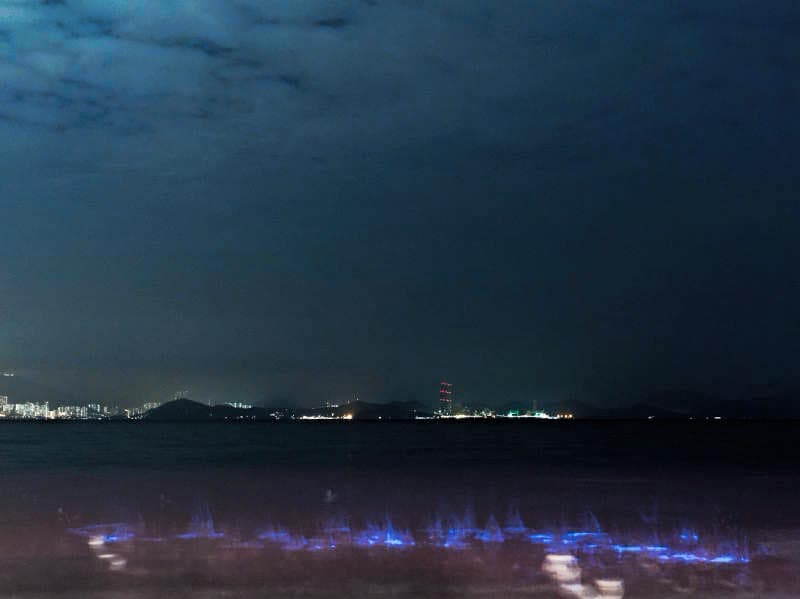
Egypt’s Biblical plagues began with waters turning to “blood”. This may tell of waters tainted by toxic algal blooms akin to red tides. Dr Stephan Pflugmacher, a biologist at the Leibniz Institute for Water Ecology and Inland Fisheries in Berlin, has suggested the culprit could have been Burgundy Blood algae: “It multiplies massively in slow-moving warm waters with high levels of nutrition. And as it dies, it stains the water red.”
The Nile waters probably became more sluggish as local climate change led to lower rainfall. Climate perhaps played a role with Hong Kong’s recent red tides, too. Last month was unusually still and warm, and these conditions along with excessive pollution likely resulted in the red tides.
While red tides have become commonplace in polluted western and central Hong Kong, it’s unusual to have a large bloom in the east. Indeed, as red tide appeared at Dameisha resort in eastern Shenzhen, some people wondered if the waters were red with blood from a shark attack, or if Judgement Day had arrived.
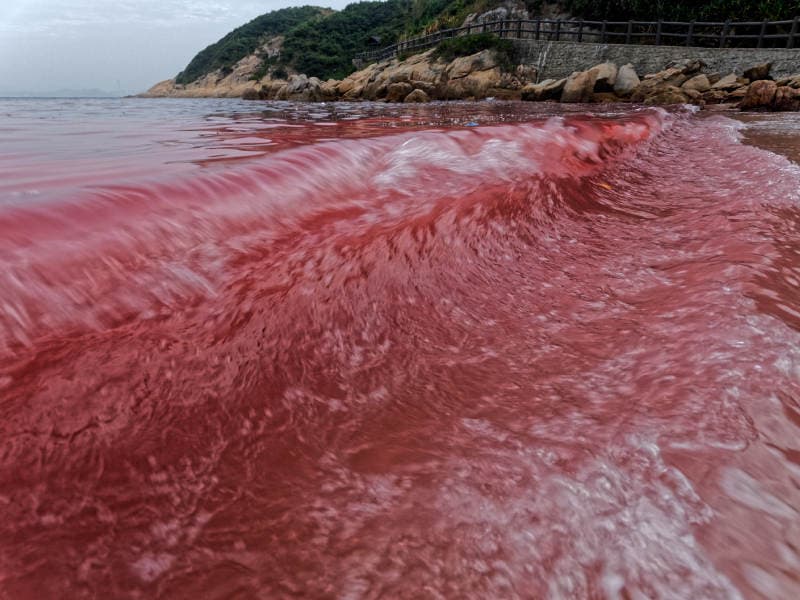
But Dameisha is right beside Yantian, a thriving new container port, with towering cranes plus new tower blocks that have sprouted in the past decade; pollution from here likely caused the red tides, which will become more frequent in future.
Yantian is readily seen from still tranquil northeast Hong Kong. If you visit Mai Po in the northwest, you see wall-to-wall developments that now throng the Shenzhen side of Mirs Bay. Close to Tai O, in the far west, work continues apace on the Hong Kong-Zhuhai-Macau Bridge.
Grandiose and mundane construction projects abound, as the Pearl River Delta is ever more transformed at pell-mell pace. Nine cities are home to perhaps 60 million people and almost merging into a giant megalopolis, with no end in sight to the construction or the soaring population. Hong Kong’s chief executive Leung Chun-ying seems unfazed, claiming it’s possible to balance city construction and a healthy environment.
Though Leung surely did not see the red tides, he need only look out of the window to see the choking pollution that blights the region, or read reports to learn of freshwater shortages, and the delta’s soil suffering severe heavy metal pollution.
“Stretch a bow to the full, and you’ll wish you had stopped in time,” Taoist philosopher Lao-Tzu warned long ago. Yet the pell-mell rush continues, powered by greed and vainglorious notions, and with no time for ancient wisdom or commonsense.
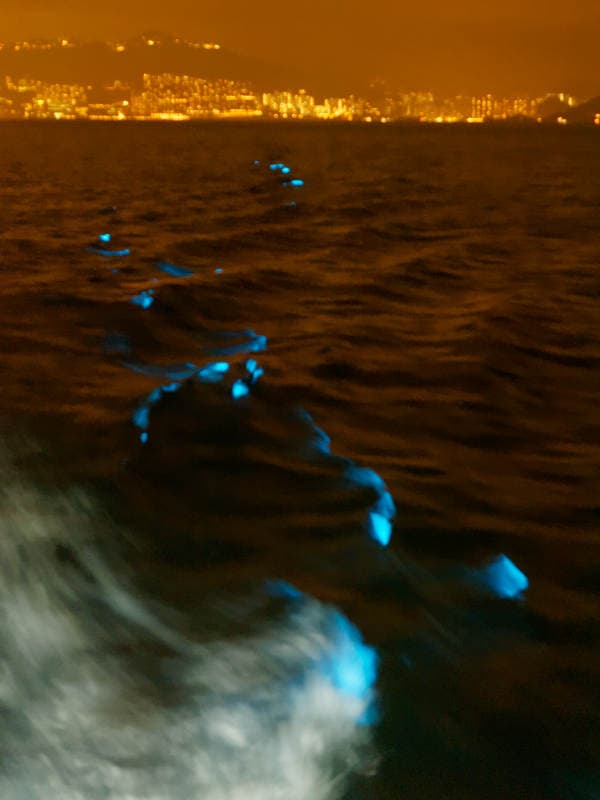
Scientifically, it’s fascinating to witness and learn of the impacts of such growth. The recent red tides were astonishing, and it’s intriguing to wonder about the effects of rising sea levels, particularly in a region historically prone to storm surges that may kill thousands and even tens of thousands of people.
But as a member of the most intelligent species we know of, it’s infuriating and deeply troubling to be both witness to and a small player in this unfolding ecological disaster. There’s no comfort in being aware this is only part of a tragedy on a global scale. Doom is not inevitable. But the science is clear: we need to stop, rethink, change course, or find a “healthy environment” is just a fantasy, as our sea turns redder and the sky becomes murkier.
Published as science column in the Sunday Morning Post.


























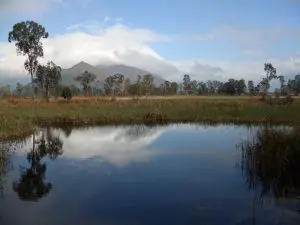



Fish starved of oxygen in HK algae rich waters
http://www.scmp.com/news/hong-kong/health-environment/article/2023694/hong-kong-fish-population-under-threat-oxygen